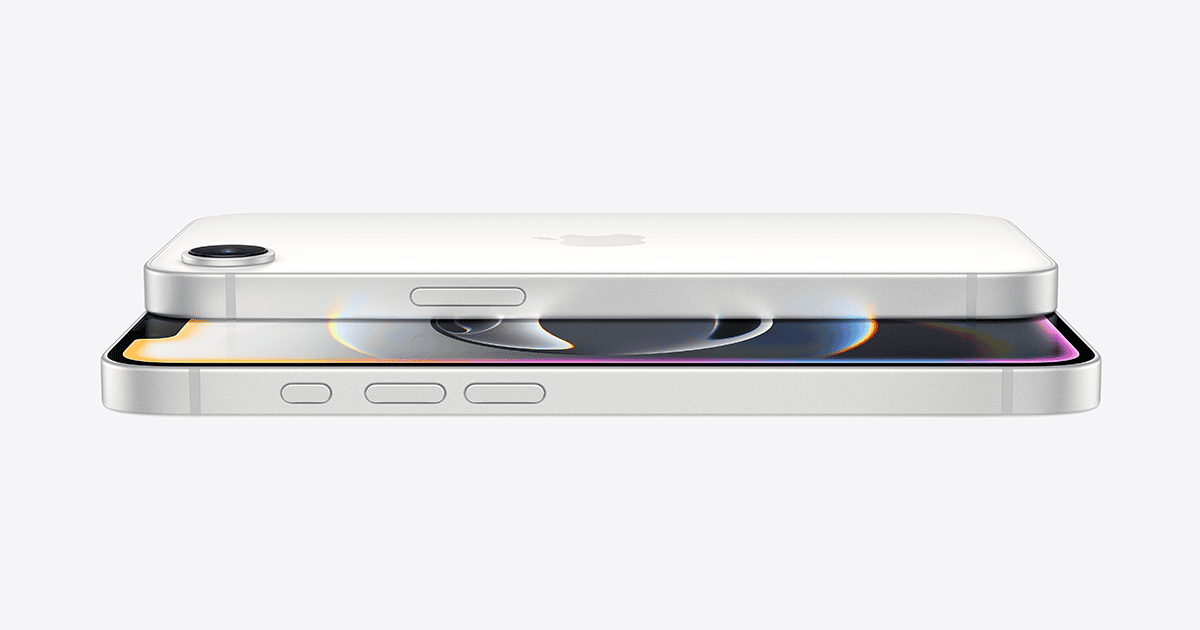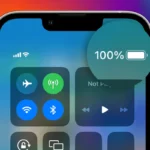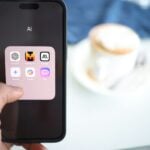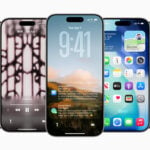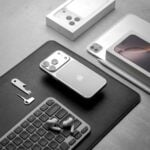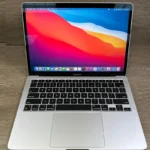Apple’s iPhone 16e is quietly becoming one of the most important—and surprising—devices in the company’s 2025 lineup. Originally expected to be a modest successor to the discontinued iPhone SE line, the iPhone 16e has emerged as a standout performer. With a modern design, robust internals, and smart compromises, the 16e isn’t just a good budget phone—it’s arguably one of the smartest plays Apple has made in years.
A New Identity for Apple’s Entry-Level iPhones
Gone is the Home button and retro form factor. The iPhone 16e features a sleek, 6.1-inch OLED display with Face ID, giving it the same modern look as Apple’s flagship devices—but at a significantly lower price. At $599, it’s positioned perfectly between affordability and capability, filling the void left by the SE series with something far more ambitious.
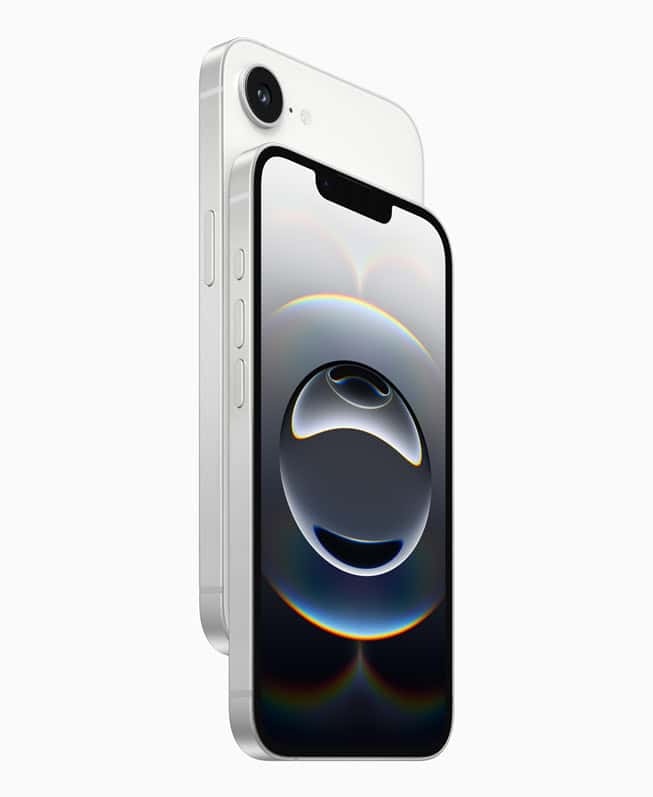
It’s also the first entry-level iPhone to ditch Lightning entirely in favor of USB-C, and it introduces the same C1 Apple modem found in the flagship iPhone 16 and 16 Pro models, future-proofing the device for global connectivity standards and enabling satellite communication for emergencies.
Under the Hood: Flagship Power in a Budget Package
Apple didn’t skimp on performance either. The iPhone 16e runs on the A18 chip—yes, the same processor powering the base iPhone 16. That means you’re getting elite-level performance in everything from app launching to gaming to camera processing. The device is also equipped with 8GB of RAM, enabling support for Apple Intelligence, the AI-powered features in iOS 18.
What’s more, the 48MP rear camera is a major upgrade over the SE’s old single-lens shooter. It uses a cropped 2x zoom method via its high-resolution sensor, meaning users can get optical-quality zoom without needing multiple lenses. It may not have an ultrawide lens or telephoto, but it punches far above its weight in most shooting conditions.
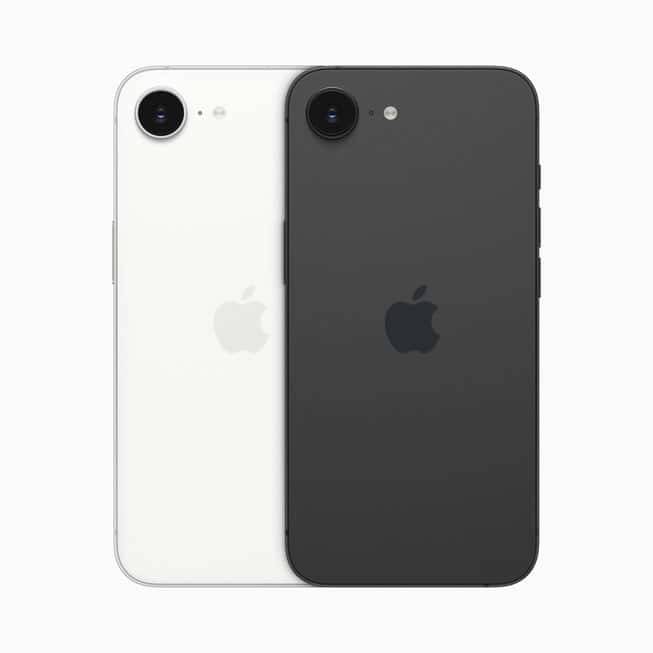
Why It’s Selling So Well
The numbers are clear: in its first quarter on the market, the iPhone 16e accounted for 7% of all iPhone sales in the U.S., outpacing the iPhone SE 3’s launch performance by around 60%. Analysts credit this to a combination of pent-up demand for a modern-looking budget iPhone and Apple’s strategic repositioning of its product lineup.
Consumers who would have previously purchased a discounted older model (like an iPhone 13 or 14) now have a compelling reason to buy a brand-new device that looks and feels current. In doing so, Apple has successfully funneled users into its latest software and hardware ecosystem—maximizing customer lifetime value and adoption of services like Apple One and AppleCare+.

Global Strategy: A Device Built for Scale
Apple is betting big on the 16e in emerging markets like India, Southeast Asia, and Latin America—regions where premium phones often fall outside the average consumer’s budget. With its aggressive pricing and powerful specs, the 16e is seen as a gateway product for first-time iPhone buyers and Android switchers.
Unlike the SE, which felt outdated even on launch day, the iPhone 16e carries the visual and performance DNA of a true flagship. That kind of value resonates far beyond the U.S., especially when paired with Apple’s push to bring Apple Intelligence and ecosystem services to a global audience.
The Trade-Offs: What You Don’t Get
To keep the price competitive, Apple did make some sacrifices. The iPhone 16e lacks MagSafe compatibility, an ultrawide camera, and mmWave 5G (though sub-6GHz is supported). The Dynamic Island is also absent, which remains exclusive to the Pro models. But these omissions haven’t hurt consumer perception—most users shopping this price range aren’t looking for cutting-edge features; they’re looking for performance, reliability, and longevity.
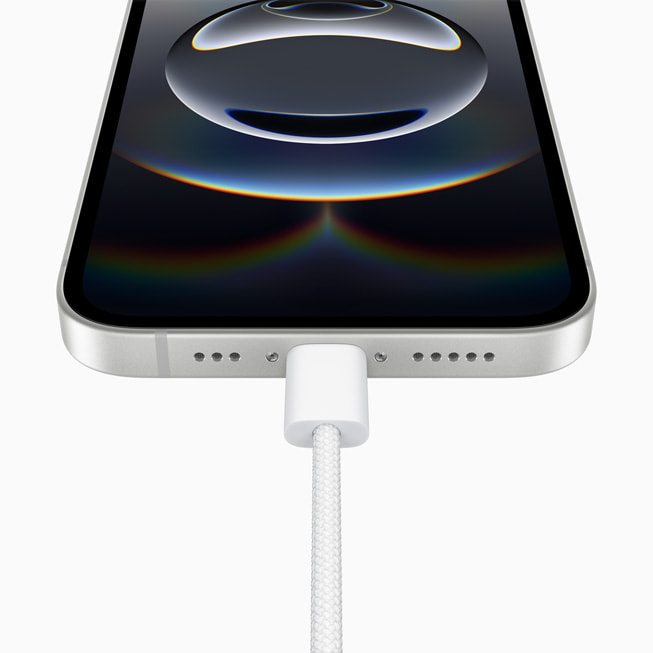
iPhone 16e vs. The Market
| Feature | iPhone 16e | Pixel 8a (Expected) | Galaxy A55 |
|---|---|---|---|
| Display | 6.1″ OLED | 6.1″ OLED | 6.5″ AMOLED |
| Chipset | Apple A18 | Tensor G3 | Exynos 1480 |
| Camera | 48MP wide | 64MP wide | 50MP wide + 12MP UW |
| Software Support | 5+ years (iOS) | 7 years (Android) | 4 years |
| Charging Port | USB-C | USB-C | USB-C |
| MagSafe | No | No | No |
| Price (USD) | $599 | ~$499 (rumored) | ~$450 |
While Android competitors may offer slightly more hardware features or lower price tags, none offer the same level of software polish, long-term updates, and integration with an AI ecosystem like Apple Intelligence.
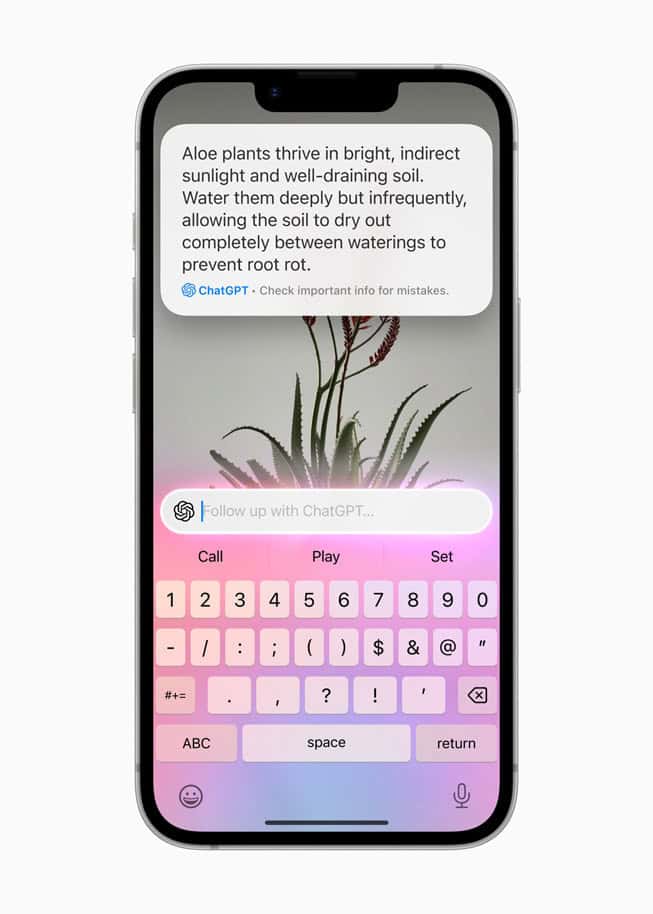
Apple’s Best Budget iPhone Ever?
The iPhone 16e isn’t just a good phone for its price—it’s arguably the best value Apple has ever put into an iPhone. It combines flagship-level internals, a modern design, and long-term software support into a package that feels like it should cost hundreds more.
By replacing the SE with something that genuinely feels premium, Apple has not only improved its mid-range offering—it has redefined it. Whether you’re a long-time iOS user looking to upgrade affordably or a new customer exploring the Apple ecosystem, the iPhone 16e is an entry point worth serious consideration.
Evolution of the iPhone
Apple’s iconic smartphone has transformed dramatically since its 2007 debut. The iPhone journey spans from a simple touchscreen device to today’s powerful computing machines with advanced cameras and AI capabilities.
The Inception and Growth
The original iPhone launched in 2007 with a revolutionary touchscreen interface. It had no App Store yet, but changed how we thought about phones forever. The iPhone 3G followed in 2008, bringing faster speeds and introducing the App Store.
In 2012, the iPhone 5 marked a significant design shift with a larger screen and aluminum body. Many fans consider the iPhone 6S one of the most reliable models ever made, with some Reddit users noting these phones “just won’t die.”
The first iPhone SE appeared in 2016, offering flagship features in a smaller, more affordable package. This budget-friendly option continued with updated models in later years.
Advancements in iPhone Technology
The iPhone X was a game-changer in 2017, removing the home button and introducing Face ID. It set the design template for future iPhones with its edge-to-edge display and notch.
Camera technology improved dramatically through the iPhone 12, 13, and 14 series. Night mode, larger sensors, and computational photography made iPhone cameras compete with professional equipment.
The iPhone 15 Pro introduced a titanium frame and the Action button. The iPhone 16 line features Apple Intelligence – Apple’s new AI system that will process information directly on the device.
Each generation brings improvements that Apple executives often call “the best iPhone we’ve ever made” during product announcements.
Design and Build
The iPhone has seen striking design changes over the years, with each generation bringing unique materials, shapes, and aesthetic touches that push boundaries. Some designs have become iconic while others marked important transitions in Apple’s design philosophy.
Material and Form Factor
The iPhone’s material choices have evolved dramatically since its debut. Early models featured mostly plastic bodies, but Apple shifted to premium materials like glass and metal for later versions. The iPhone XS in Gold introduced a design many consider “one of the prettiest smartphone designs ever” with its polished stainless steel frame and glass back.
For many fans, the Jet Black iPhone 7 represents a high point in form factor design. Its seamless, glossy finish created an almost liquid appearance that felt revolutionary.
The current iPhone 16 lineup offers several size options:
- iPhone 16: 6.1-inch display
- iPhone 16 Plus: 6.7-inch display
- iPhone 16e: 6.06-inch display
- iPhone 16 Pro: 6.1-inch OLED display
- iPhone 16 Pro Max: 6.7-inch OLED display
Aesthetic Improvements and Durability
Each iPhone generation has brought key visual refinements. The curved design of the iPhone 3G gained many fans for its comfortable hand-feel and distinctive look. Later models introduced the flat-sided design that many users prefer for its crisp lines and solid grip.
Modern iPhones feature Ceramic Shield glass, which offers improved drop protection. The Pro models use titanium frames that reduce weight while increasing strength compared to earlier stainless steel versions.
Color options have expanded significantly. The iPhone 16 Pro offers subtle, sophisticated finishes, while standard models come in brighter colors. The OLED screens now stretch closer to the edges with smaller notches or Dynamic Islands, creating a more immersive visual experience.
The iPhone’s design philosophy consistently balances beauty with simplicity and functionality, making even older models hold up well against modern smartphones.
Display Technology
iPhone display technology has evolved significantly with each generation, with recent models featuring cutting-edge screens that deliver exceptional visual experiences. Apple has consistently pushed boundaries in color accuracy, brightness, and resolution.
OLED and Brightness
The latest iPhones feature impressive OLED displays that provide deep blacks and vibrant colors. OLED technology allows each pixel to emit its own light, eliminating the need for backlighting and creating true blacks by simply turning pixels off.
The iPhone 14 Pro Max earned top marks for its display quality, receiving “Very Good to Excellent” ratings in all display performance categories. Its screen shows remarkable color accuracy – a feature Apple has refined since the iPhone 7, which was once considered the most color-accurate display ever measured.
Recent Pro models include ProMotion technology, enabling adaptive refresh rates up to 120Hz. This creates smoother scrolling and more responsive touch interactions. The screens also reach impressive brightness levels, with peak HDR brightness exceeding 1,500 nits in some models.
Screen Size and Resolution
iPhone screen sizes have grown significantly over the years, with the iPhone 16 Pro Max featuring a 6.8-inch display – the largest ever on an iPhone. This provides more screen space for videos, games, and productivity apps.
Apple’s Super Retina XDR displays deliver resolutions that exceed what the human eye can distinguish at normal viewing distances. This creates text that appears crisp and images that show fine detail without visible pixels.
The resolution has steadily improved across generations:
- iPhone X: 2436 × 1125 pixels (458 ppi)
- iPhone 12 Pro: 2532 × 1170 pixels (460 ppi)
- iPhone 14 Pro: 2556 × 1179 pixels (460 ppi)
The larger screen sizes haven’t come at the cost of usability. Apple reduced bezels and eliminated the home button, allowing for bigger displays in similar-sized devices. This design approach maximizes screen real estate while keeping the phones comfortable to hold.
The Cutting-Edge Performance
iPhone performance has reached new heights with each generation, offering faster speeds and better capabilities. Modern iPhones handle demanding tasks with ease thanks to powerful processors and optimized systems.
Processors and Speed
The iPhone 16 Pro and Pro Max feature the A18 Pro chip, which delivers incredible processing power. This chip makes these phones the fastest iPhones ever made, with benchmark scores that beat most competitors.
The standard iPhone 16 also packs impressive power with its A18 chip. These processors handle complex tasks quickly and smoothly.
The iPhone 16e shows how far iPhone performance has come, offering 80% faster CPU performance than the iPhone 11’s A13 Bionic chip.
Battery life has improved too. The latest models offer longer usage time between charges, with the iPhone 16 Pro boasting the “best iPhone battery life ever.”
Gaming and Multitasking
Modern iPhones excel at gaming with their powerful graphics capabilities. Games that once needed gaming PCs now run smoothly on iPhone 16 models.
The A18 and A18 Pro chips handle 3D games with:
- High frame rates
- Detailed graphics
- Quick loading times
- Low heat output
Multitasking is another strong point. Users can:
- Run multiple apps at once
- Switch between tasks instantly
- Use split-screen features
- Keep apps running in the background
The enhanced RAM in newer models prevents slowdowns even with many apps open. This makes the iPhone 16 lineup perfect for people who use their phones for work, gaming, and media consumption all at once.
Camera Capabilities
The latest iPhone models showcase remarkable photography and video capabilities with significant improvements over previous generations. The camera systems in these devices combine advanced hardware with intelligent software to deliver exceptional results in various shooting conditions.
Camera Features and Quality
The iPhone 16 Pro and Pro Max stand out as the best options for photography, featuring a triple-camera system. The main camera captures stunning detail even in low light. The ultra-wide lens lets you fit more into the frame, perfect for landscapes and group shots.
One exciting addition is the Camera Control Button found on newer models. This button gives users quick access to camera functions without navigating through menus.
The Telephoto Camera on the iPhone 16 Pro Max offers 5x Optical Zoom, letting you get closer to distant subjects without losing quality. This is great for sports, wildlife, or concert photography.
The Front-Facing Camera has also seen upgrades, making selfies look more natural with better skin tones and improved detail.
Photo and Video Enhancement
The Pro models support ProRaw format, giving photographers more control when editing. This feature saves all image data, letting you adjust white balance, exposure, and colors after taking the shot.
Macro shots on recent iPhones are impressive. You can capture tiny details like water droplets or flower petals with amazing clarity. The iPhone 13 Pro Max started this trend with its excellent close-up capabilities.
Video features include Cinematic mode, which adds a movie-like blur to backgrounds. You can even change the focus point after recording.
Night mode has become better with each generation, turning dark scenes into bright, clear images without using flash. The phones automatically detect low light and adjust settings for the best results.
Battery Performance and Charging
Battery life and charging capabilities have become defining features of modern iPhones. The latest models offer impressive power efficiency alongside multiple charging options that cater to different user needs.
Battery Life and Usage
The iPhone 16 Pro Max currently holds the crown for best battery performance among all iPhone models. It delivers an impressive 18 hours and 6 minutes of usage on a single charge.
Apple markets this device as having the “best battery life on iPhone ever”, with up to 29 hours of video streaming capability. This represents a significant improvement over previous generations.
For users who want excellent battery life without the Pro Max price tag, the iPhone 15 Plus offers a strong alternative. It features a large battery that easily lasts a full day of heavy use.
Battery health remains an important consideration for long-term ownership. Modern iPhones include battery health monitoring tools in settings to help users track degradation over time.
Charging Methods and Speed
Current iPhone models support multiple charging methods, giving users flexibility based on their needs and preferences:
- Wired charging: The iPhone 16 series uses USB-C ports, allowing faster charging and better compatibility with other devices
- Wireless charging: All recent models support the Qi standard for cable-free power
- MagSafe technology: Introduced with iPhone 12, this magnetic charging system delivers up to 15W of power
The iPhone 16 line brings improved charging speeds, especially when using Apple’s recommended 20W or higher power adapters. A typical iPhone can reach about 50% charge in 30 minutes with the right charger.
MagSafe accessories have expanded the charging ecosystem, with options ranging from desktop chargers to battery packs that attach directly to the phone’s back.
Connectivity and Accessories
The latest iPhone models bring significant improvements in both connectivity options and accessory compatibility. These enhancements make everyday use more convenient while expanding the phone’s capabilities beyond what was previously possible.
Network and 5G
The newest iPhone models feature cutting-edge 5G technology that delivers lightning-fast download and upload speeds. Users can stream high-definition videos, join video calls, and download large files without frustrating delays.
The iPhone 16 includes an upgraded 5G modem that connects to networks more efficiently than previous models. This improvement means better coverage in areas where signals were once weak. The phone switches smartly between 5G and other networks to save battery when ultra-fast speeds aren’t needed.
Connection stability has also improved, with fewer dropped calls in challenging environments. Apple has added support for more 5G bands, making the phone work better internationally.
Bluetooth 5.3 technology in the latest models allows for connecting to multiple accessories at once with improved range and reliability. The addition of Ultra Wideband chips enables precise location finding for compatible accessories.
MagSafe and Other Accessories
The MagSafe ecosystem continues to expand with new options that make the iPhone more useful. The magnetic connection system allows for fast, secure wireless charging while also supporting a variety of attachable accessories.
Popular MagSafe accessories include wallet attachments, car mounts, and battery packs that snap onto the back of the phone. These accessories stay firmly in place during use, unlike traditional wireless chargers that can easily misalign.
The switch to USB-C on newer iPhone models opens up a world of connectivity options. Users can now connect their phones directly to cameras, monitors, and other USB-C devices without special adapters.
Many iPhone accessories that seemed like luxury items have proven their worth in daily use. Power banks with built-in MagSafe are especially useful, eliminating the need to carry extra cables while on the go.
Security Features
The iPhone’s security system blends strong biometric protection with advanced data safety tools. These features work together to shield your personal information from unwanted access.
Biometric and Data Protection
iPhones use end-to-end encryption to protect your messages and calls. This security measure works across all your Apple devices, keeping your communications private.
The newer iPhone models offer enhanced protection for your stored data. Even if someone gets hold of your phone, they can’t access your information without proper authentication.
iPhones include built-in protection against malware and viruses. This keeps your personal files safe from digital threats.
You can control which apps can access your data, location, and camera. This puts you in charge of your privacy.
For extra security, iPhone offers a “Lockdown Mode” that protects your personal data from sophisticated attacks.
Software and Face ID
Face ID stands out as one of the iPhone’s strongest security features. It uses facial recognition technology to verify your identity quickly and accurately.
The system creates a detailed map of your face using thousands of invisible dots. This makes Face ID extremely difficult to fool with photos or masks.
iPhone users can set up alternative appearances in Face ID. This is helpful if your look changes significantly with glasses, hats, or other accessories.
The iPhone’s back tap feature works as a hidden button for quick access to security features. You can set it to lock your screen or activate other security functions.
Regular software updates patch security vulnerabilities. Apple consistently releases updates to address new threats and strengthen existing protections.
Software and User Experience
The iPhone’s success stems largely from its smooth, intuitive software and exceptional user experience. Apple has consistently refined iOS while adding meaningful features that work reliably right out of the box.
iOS and Updates
iPhones stand out for their long-term software support. While Android phones typically receive 2-3 years of updates, Apple provides iOS updates for around 5-6 years on average. This means older models like the iPhone 6S remained usable and secure long after release.
iOS is known for its clean interface and ease of use. Even first-time users can quickly learn to navigate the system without confusion. The App Store offers a vast selection of high-quality apps that must meet Apple’s strict guidelines.
Apple’s focus on privacy features also enhances the user experience. Options like App Tracking Transparency give users more control over their data than competing platforms.
The consistency between iOS versions makes upgrading feel familiar yet improved. Each update introduces useful features without requiring users to relearn basic functions.
Artificial Intelligence and Siri
Siri was groundbreaking when first introduced, offering voice control before most competitors. Though initially limited, it has grown more capable with each iOS version. Siri can now handle complex requests like sending messages, setting reminders, and controlling smart home devices.
Apple Intelligence features transform how users interact with their iPhones. These tools will enable smarter photo organization, improved text suggestions, and more natural conversations with Siri.
On-device processing for AI features helps protect user privacy. Unlike some competing assistants, much of Siri’s work happens directly on the iPhone rather than in the cloud.
Voice recognition has steadily improved, with Siri better understanding different accents and natural speech patterns. This makes the assistant more helpful for daily tasks.
Environmental Impact
The iPhone has a significant environmental footprint, from manufacturing to end-of-life disposal. Apple has made strides to reduce this impact through various initiatives.
Sustainability Efforts
Apple aims for carbon neutrality by 2030 with its Apple 2030 plan. Recent iPhone models show progress toward this goal despite their environmental cost.
The typical iPhone creates about 64kg of CO2 emissions during its lifecycle. Most of this impact happens during production.
Mining for materials and manufacturing account for 59% of Apple’s carbon emissions. The company has responded by:
- Using recycled materials in components
- Powering facilities with clean electricity
- Removing chargers from packaging to reduce waste
- Switching to renewable packaging materials
The iPhone 14 and 15 series use extensive emissions-cutting methods. However, the iPhone 14 Pro Max with 1TB storage has the largest carbon footprint of any iPhone model.
Recycling and Refurbishment
Apple has created robust programs to extend iPhone lifespans and recover valuable materials. These efforts help reduce the need for new resource extraction.
The Apple Trade In program lets customers exchange old devices for credit toward new purchases. This puts working phones back into circulation.
Refurbished iPhones offer a greener alternative to new devices. They undergo testing and use genuine Apple replacement parts when needed.
For devices that can’t be refurbished, Apple’s recycling robots (like Daisy and Dave) recover materials including:
- Gold
- Copper
- Aluminum
- Rare earth elements
These recovered materials go back into new iPhones. For example, iPhone 15 models use 100% recycled cobalt in their batteries.
Buying refurbished iPhones cuts environmental impact by avoiding the manufacturing of new devices. It also keeps electronics out of landfills.
Alternative Options
While the iPhone offers excellent features, several impressive smartphones provide similar or better functionality at different price points. These alternatives offer unique advantages in design, performance, and customization options.
Android Alternatives
The Google Pixel 9 Pro stands as a top iPhone alternative with its exceptional camera system and clean Android interface. Many users find its AI features more advanced than Apple’s offerings.
The OnePlus 13 delivers outstanding performance with its lightning-fast charging and smooth display. Its OxygenOS provides a near-stock Android experience with useful customizations.
For gamers, the RedMagic 10 Pro offers dedicated gaming features like shoulder triggers and advanced cooling systems that the iPhone lacks.
Budget-conscious shoppers should consider the Pixel 8a or OnePlus 12R, which provide excellent value with premium features at mid-range prices.
Comparing to Other Brands
Samsung’s Galaxy S24 Ultra offers features iPhone users might envy, including the S Pen stylus and advanced camera zoom capabilities. Its display quality often outshines Apple’s screens in brightness and color accuracy.
For those interested in foldable technology, the Samsung Galaxy Z Flip 6 provides a compact form factor that’s impossible to find in Apple’s lineup.
Many Android phones offer advantages in customization options. Users can change launchers, icons, and even install alternative app stores – freedoms iPhone users don’t enjoy.
Battery life comparisons often favor Android alternatives, with many models lasting significantly longer than iPhones on a single charge. Fast charging capabilities also tend to outpace Apple’s technology.
Final Remarks
The quest for the “best iPhone ever” remains ongoing as Apple continues to improve with each release. Many fans consider the iPhone 6S one of the most reliable models ever created, with many units still working years later.
The iPhone X marked a turning point in design and features. It brought major changes that set the path for future iPhones.
Apple executives have made it a tradition to claim each new release is “the best iPhone we’ve ever made” during product launches. This phrase has become so common that fans now expect it at every event.
Looking ahead, the iPhone 16 Pro Max promises cutting-edge features that may earn it a place in this ongoing debate. Key improvements include:
- Enhanced camera system
- Longer battery life
- Faster processing speeds
- Improved display technology
User preferences play a huge role in determining which iPhone deserves the top spot. Some value durability, others prioritize innovation.
The “best iPhone” title changes with time as technology advances. What seems revolutionary today becomes standard tomorrow.
For those seeking the ultimate iPhone experience, the latest models offer the most advanced features. However, many still hold older models in high regard for their reliability and simplicity.
Frequently Asked Questions
Many iPhone users wonder about model differences, performance metrics, and value propositions. These questions help buyers make informed decisions when choosing their next device.
What features distinguish the highest-rated iPhone model from previous versions?
The iPhone X marked a significant innovation leap with its edge-to-edge display and Face ID technology. This model removed the home button, introducing gesture navigation that changed how users interact with their devices.
Camera improvements often set top models apart. Recent Pro models include enhanced camera systems with better low-light performance and higher resolution sensors.
Battery life has also improved dramatically in newer models, with many lasting all day on a single charge—a major upgrade from earlier versions.
How do the latest iPhone models compare in terms of performance?
The latest iPhones use Apple’s newest processors, making them faster than previous generations. Each new chip typically offers 15-20% better CPU performance and even larger graphics improvements.
The iPhone 16 provides nearly Pro-level performance with excellent battery life and powerful cameras. Apple’s chip optimization means even standard models handle demanding tasks with ease.
Memory management has improved too, allowing more apps to stay open in the background without slowing down the phone.
Which iPhone model offers the best balance between price and capabilities?
Many experts consider the standard iPhone model the best value option. It includes most key features without the premium price of Pro versions.
The iPhone 6S earned praise for reliability and longevity, with many units still working years after release. This durability factor greatly affects overall value.
Previous-generation iPhones often provide excellent value when their prices drop after new model releases. They still receive software updates for many years.
What advancements in technology make the most recent iPhone stand out?
Recent iPhones feature shortcut buttons that improve usability and provide quick access to common functions. These hardware innovations enhance the user experience.
Camera technology continues to advance with each generation. Newer models capture better photos in challenging lighting conditions and offer more creative options.
The addition of eSIM technology in newer iPhones has eliminated the need for physical SIM cards in many regions, simplifying the setup process.
How has user satisfaction with recent iPhone models compared to earlier generations?
User satisfaction typically remains high across iPhone generations. Many users report being happy with both older and newer models.
Common questions about iPhones often relate to pricing, camera quality, and gaming capabilities. These factors significantly impact overall satisfaction.
Battery life satisfaction has improved dramatically with recent models. Early iPhones often required mid-day charging, while newer versions easily last all day.
What are the evaluative criteria used by experts to determine the best iPhone model?
Experts evaluate iPhones based on performance benchmarks, including processor speed, graphics capabilities, and real-world task completion times. These measurements provide objective comparison points.
Camera quality assessment involves testing in various lighting conditions and comparing results against previous models and competitors. This reveals meaningful improvements.
Battery testing typically includes standard usage patterns to determine real-world endurance. Experts often measure how long phones last during typical daily activities rather than relying solely on manufacturer claims.

